TechRadar Verdict
The Arzopa M1RC is fast to set up and offers great performance with its 180Hz refresh rate, especially considering the price. However, it's not without some downsides, particularly when it comes to colour accuracy and uniformity, making it less ideal for creative professionals. However, social media creators will benefit from the resolution, refresh rate, and price.
Pros
- +
180Hz refresh rate
- +
Sharp QHD resolution
- +
Sleek, minimal design
Cons
- -
Limited colour accuracy
- -
Average contrast ratio
- -
Luminance uniformity issues
Why you can trust TechRadar
Arzopa M1RC: 30-second review
The Arzopa M1RC has been designed as a gaming monitor and, as such, is very simplistic with a few design flares, such as the red accent colours on the back that highlight its intended use. What's really nice about the design is the very slim bezel all the way around, which means that most of the front of the monitor is just taken up by the screen. At 27 inches in diagonal with 2K resolution and a 180Hz refresh rate, it's quite immersive when playing the latest games.
What makes this monitor stand out is that considering its specifications, it's really well-priced at the budget end of the monitor market yet comes with a host of features and, most importantly, adjustments that make it a great choice not only for gaming but also for social media content creators looking for a larger-scale monitor for editing and reviewing content.
While the gaming monitor is great for display, you can tell from the outset that it is on the budget end of the market. As you assemble the stand and base, you realize there is very little adjustment. The only adjustment you really have through the stand is the tilt of the monitor. However, there is a VESA fixing which means that there are other ways of mounting. On the back, there are plenty of options for connection, so you can connect through USB Type-C, HDMI, or DisplayPort, with a cable included in the box.
Setting up the monitor is straightforward and plug-and-play for most machines. If you need to make any adjustments, this is all done through the on-screen display, with access via the joystick-style power switch on the back of the monitor. This takes a little getting used to, especially when it comes to adjusting the brightness, as a warning sign pops up preventing you from increasing the value. It takes a little time to figure out how to get around this.
Once you do, however, there are plenty of display options. The 180Hz refresh rate is absolutely spot on and provides smooth playback for all applications and games that we tested. Likewise, we did a bit of video editing in DaVinci Resolve for a few social media edits, and this monitor performed perfectly well. It might not be the absolute best monitor for video editing but at this price, it did as well as we'd expect.
Checking out images in Photoshop and various other applications also looked fine although you do notice that some of the colour and tonal gradation is limited. It's only when the tests were done using the Datacolor SpyderX that you realize some of the colour profiling and screen uniformity aren't quite up to the standards of the best monitors for photo editing tuned for professional creative use.
Considering the price and if you are in the market for a 27-inch monitor for displaying content or playing games, then the simplicity and scale of this monitor has plenty going for it.
Arzopa M1RC: Price and availability
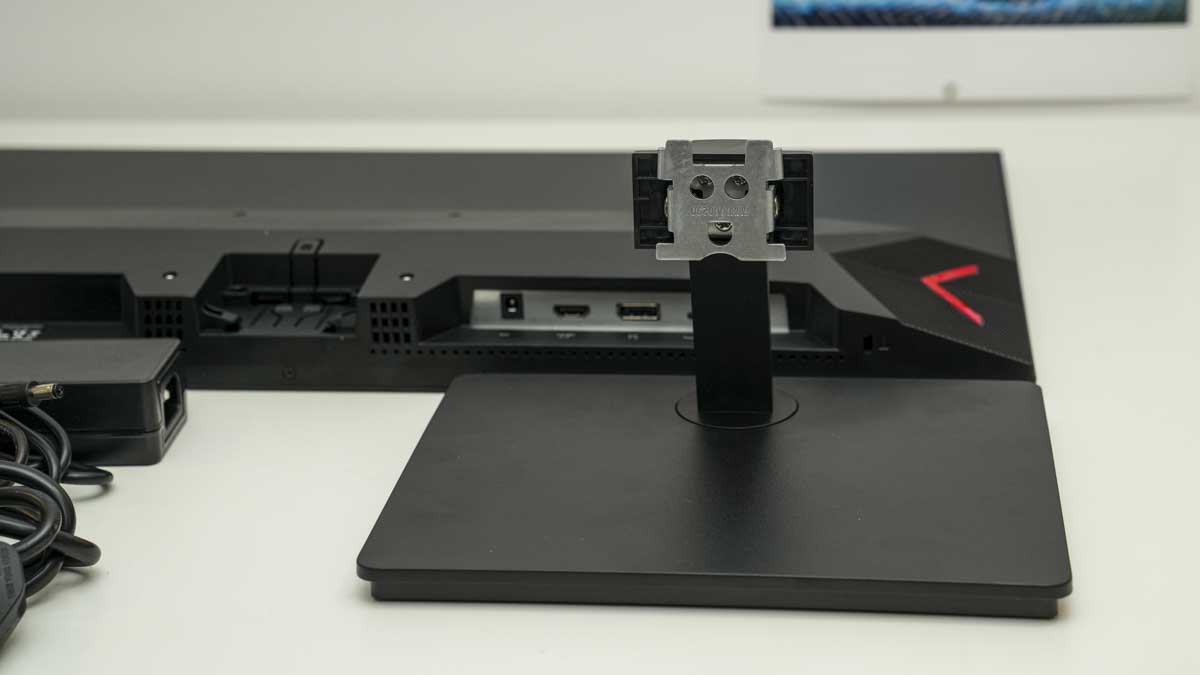
- How much does it cost? £239 / $269
- When is it out? Available now
- Where can you get it? You can get it from the Arzopa website
As of the latest listings, the Arzopa M1RC is priced around £239/$269 It is available for purchase on the official Arzopa website and popular online retailers like Amazon.
- Value: 4 / 5
Arzopa M1RC: Specifications
| Model: | Arzopa M1RC |
| Screen Resolution | 2560 x 1440 (QHD) |
| Physical Dimensions | 613 x 450mm with stand |
| Weight | 3.67kg |
| Software | Compatible with macOS and Windows |
| Contrast Ratio | 1000:1 |
| Multimedia and Input Devices | N/a |
| Panel Technology | IPS |
| Aspect Ratio | 16:9 |
| Display Scan Frequency | 180Hz |
Arzopa M1RC: Design

The Arzopa M1RC has a minimalist sleek design, with thin bezels around the screen, giving it a modern aesthetic that would look great in any design studio or office. Instantly, one of the features that really stands out, especially considering the price, is the monitor's matte finish, which reduces reflections. This matt finish screen helps to avoid distractions and ensures that you can appreciate the quality of the content on-screen without interference from the surrounding environment.
While the monitor's design is sleek, there are immediate signs that it is positioned at the budget end of the market. As you assemble the monitor, which essentially consists of three parts—the base, stand, and monitor—the overall feeling is that it's quite plasticky but reasonably well made. Another limitation is the stand's mechanics: it cannot freely rotate, and while the monitor does tilt, the tilt angle is extremely limited.
In terms of size, the monitor has a 27-inch display with a resolution of 2560 x 1440 (QHD). The overall scale is very neat, with the monitor itself measuring 613mm x 450mm, including the stand. The depth of the monitor ranges from 9mm at its slimmest point to about 40mm at its widest, making it extremely slim.
While the monitor comes with a small stand, it feels like a temporary solution. Most gamers and users will likely want to mount it using the standard VESA mount on the back. This also hints at how this monitor, alongside two others, could be used to create a budget-friendly tri-monitor setup.
The monitor is well equipped in terms of inputs, featuring DisplayPort 1.4, 1 x HDMI 2.0 Port, 1 x Audio, and a USB Type-C port, offering plenty of connection choices.
As with most monitors, the on-screen display (OSD) is accessed via the power button on the back of the monitor. This button follows a joystick design with five actions: push to switch on and off and up, down, left, and right to navigate the screen options.
While there is a 3.5mm audio out, there are no built-in speakers, which likely helps keep the price as reasonable as possible.

- Design: 3.5 / 5
Arzopa M1RC: Features
The Arzopa M1RC is primarily aimed at gamers. Its standout feature is the 180Hz refresh rate, which is possible through the USB Type-C and DP connections. This drops to 144Hz through the HDMI 2.0 connection, which should still be more than sufficient for most users.
Beyond gaming, the monitor's 2K QHD resolution also makes it a great choice for occasional office work and media editing, especially for social media. However, unlike the very best business monitors, this display doesn't feature any certified eye protection technology, although it does include Arzopa's Low Blue Light feature as standard.
Through the OSD, there are plenty of options for adjusting the display, and the depth of these adjustments is greater than many other budget monitors, giving you a little more flexibility over its use. The fact that it offers a fast IPS LCD panel means the monitor is of decent quality, and when coupled with the matte flat surface of the screen, it offers a far higher display quality visually than you would expect.
In terms of technical aspects, the display has a standard aspect ratio of 16:9, a pixel pitch of 0.2331 (H) x 0.2331 (V) mm, and an overall screen size of 596.736 (H) x 335.664mm (V). The brightness is impressive at 350 cd/m² at 100%, and the standard colour temperature is 6500K. The static contrast ratio is 1000:1, meaning blacks will look good, and the dynamic contrast ratio is 1,000,000:1.
When it comes to colour gamut, the monitor offers a mediocre 78% NTSC, 110% sRGB, and 82% DCI-P3, which means that for serious creative use, it will be difficult to ensure colour and tonal accuracy. However, considering the price, size, and matte finish of the monitor, it would still be a decent option for anyone needing a reasonably sized monitor for social media edits. The monitor also has a decent viewing angle of 89º makes it a good option if multiple people need to crowd around to review content.
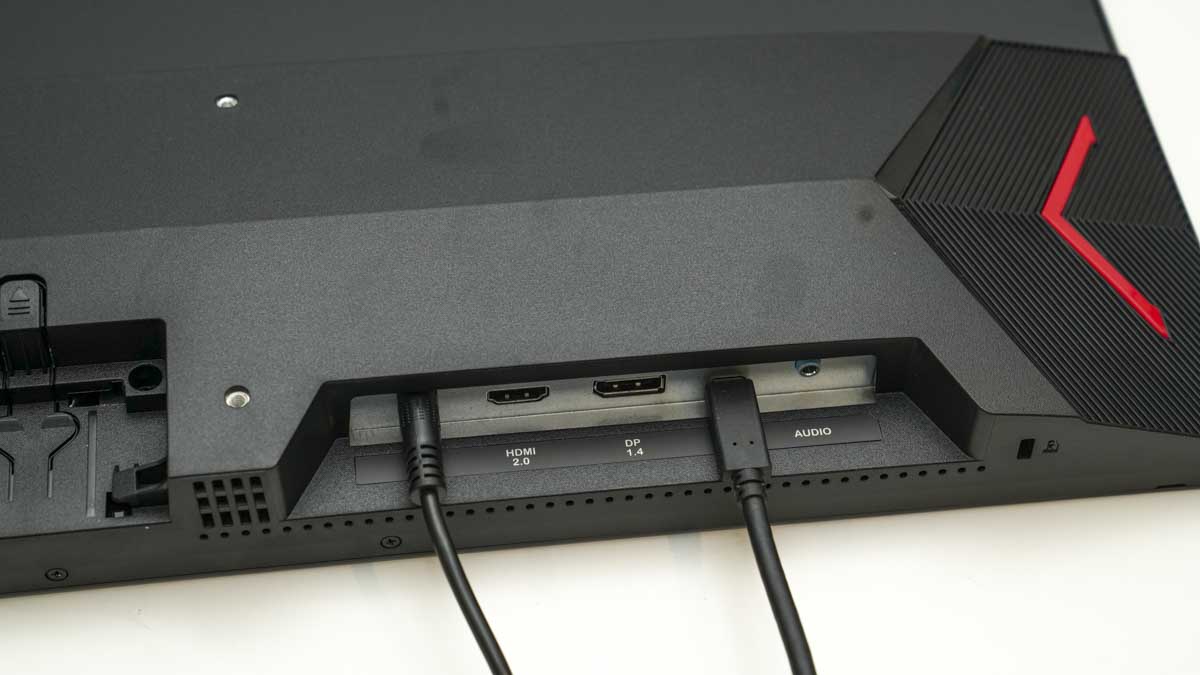
- Features: 4 / 5
Arzopa M1RC: Performance
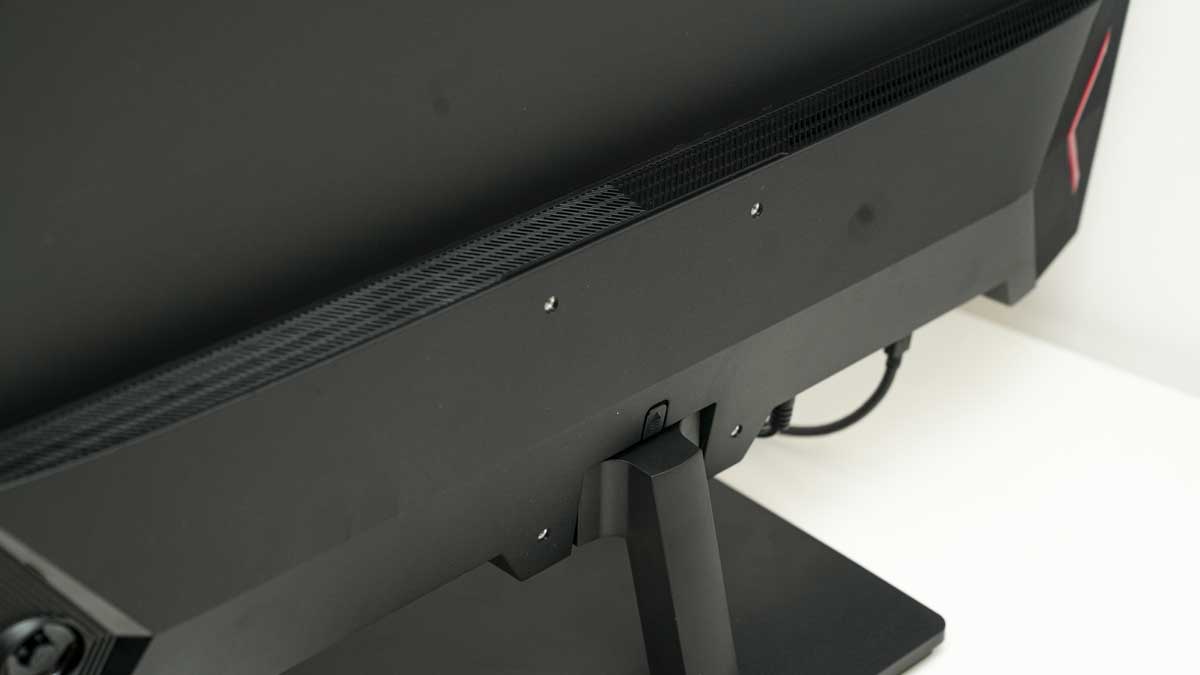
| Datacolor SpyderX2 | Row 0 - Cell 1 | Row 0 - Cell 2 |
| Row 1 - Cell 0 | Gamut | 3.5/5 |
| Row 2 - Cell 0 | Tone Response | 4/5 |
| Row 3 - Cell 0 | White point | 4/5 |
| Row 4 - Cell 0 | Contrast | 3/5 |
| Row 5 - Cell 0 | Luminance uniformity | 3/5 |
| Row 6 - Cell 0 | Colour Uniformit | 3/5 |
| Row 7 - Cell 0 | Colour Accuracy | 3/5 |
| Row 8 - Cell 0 | Overall rating | 3.5/5 |
The Arzopa M1RC's core design is aimed at gamers, and for this use, the monitor performs exceptionally well, offering decent visuals and smooth playback of games with higher frame rate requirements. The 180 Hz refresh rate is exceptional for this price of the monitor, and with three of these, you can build yourself an extremely well-priced three-monitor rig. What really stands out compared to the monitors we use in the studio is the quality of the IPS screen's matt finish. It shows little, if any, reflection, with only slight shadows cast across the monitor as people walk past, rather than the usual reflective presence.
The large screen size, combined with the small bezel, is also worth mentioning, as it creates a more immersive experience. The 27-inch real estate helps block out distractions while providing plenty of screen space for applications and windows.
The initial setup of the monitor is quick—there's no software to install, and this is simply a plug-and-play monitor designed for standard use rather than colour accuracy. The simple base is lightweight and clips into the stand, which is also rather small. Once connected and clipped into the monitor, the stand only offers a slight tilt. There's no option to adjust the height or rotate it horizontally or vertically—features reserved for more expensive models.
However, this monitor was designed with the gaming community in mind. When you start using it in that context, it's obvious that the thin bezel and design make it an ideal option for dual or triple monitor setups. With its relatively lightweight and slimline design, this monitor is ideal for mounting alone or alongside others using the VESA mount at the back.
Once the monitor is in position, there are plenty of connection options, including DP, HDMI, or USB Type-C. If you need the fast 180Hz refresh rate, you'll need to use the DP or USB Type-C ports, and the monitor will automatically detect the connection.
There are no built-in speakers for audio, but there is a 3.5mm audio jack, which enables you to route audio to speakers if needed.
The last part of the setup involves adjusting settings through the OSD, accessed using the multi-function joystick button on the back of the monitor. This single button allows you to power the monitor on and off, navigate, select, and change settings by pushing right to access. For the most part, this navigation is intuitive, though there is a slight issue when increasing settings such as brightness.
A quick tap of the multifunction joystick brings up the OSD menu, enabling you to navigate to the desired option and increase or decrease the selected settings. For volume, display input selection, and brightness, there's also a preset quick access option available by tapping the joystick up, left, or down.
Tapping down opens the OSD brightness adjustment, and tapping down again decreases the brightness. However, tapping up triggers a warning that increasing the brightness will consume more power. You'll be prompted with an "OK" or "Cancel" option, and this is where some confusion might arise. On the screen, "OK" is highlighted, and according to standard navigation conventions, you'd push the button to confirm, but in this case, it powers down the monitor. What you need to do is push right, which you would think would select "Cancel," but actually confirms the brightness adjustment so you can then increase the value. To switch between "OK" and "Cancel," on the previous screen you have to push up and down on the joystick. It's not overly intuitive, but once you figure it out, it works fine.
Otherwise, the monitor setup is straightforward, though there's little room for adjustment. The test was to check out its gaming potential, as well as how well the monitor performs for a bit of video and image editing.
As expected the monitor is well-tuned for gaming, considering its price. The 27-inch screen's colour, tone, and refresh rate make it perfect for playing games, with sharp, clear graphics that reproduce the atmosphere of worlds and tracks well.
Switching to a few creative applications, the monitor was first calibrated with the Datacolor Spyder X2. It quickly became apparent that the colour profiles were too restrictive for effective video or image enhancement. In both DaVinci Resolve and Photoshop, the shadow and highlight detail of RAW and ungraded footage looked fine, but once edited and viewed on calibrated Adobe RGB monitors, additional details and colour shifts became noticeable.
However, watching back edited footage looked great, mainly because of the monitor's intended use. This monitor isn't suitable for professional creative applications. However, as a large, high-resolution screen for social media edits, it does have value
Test scores using the Datacolor Spyder X2 display analysis showed the following results.
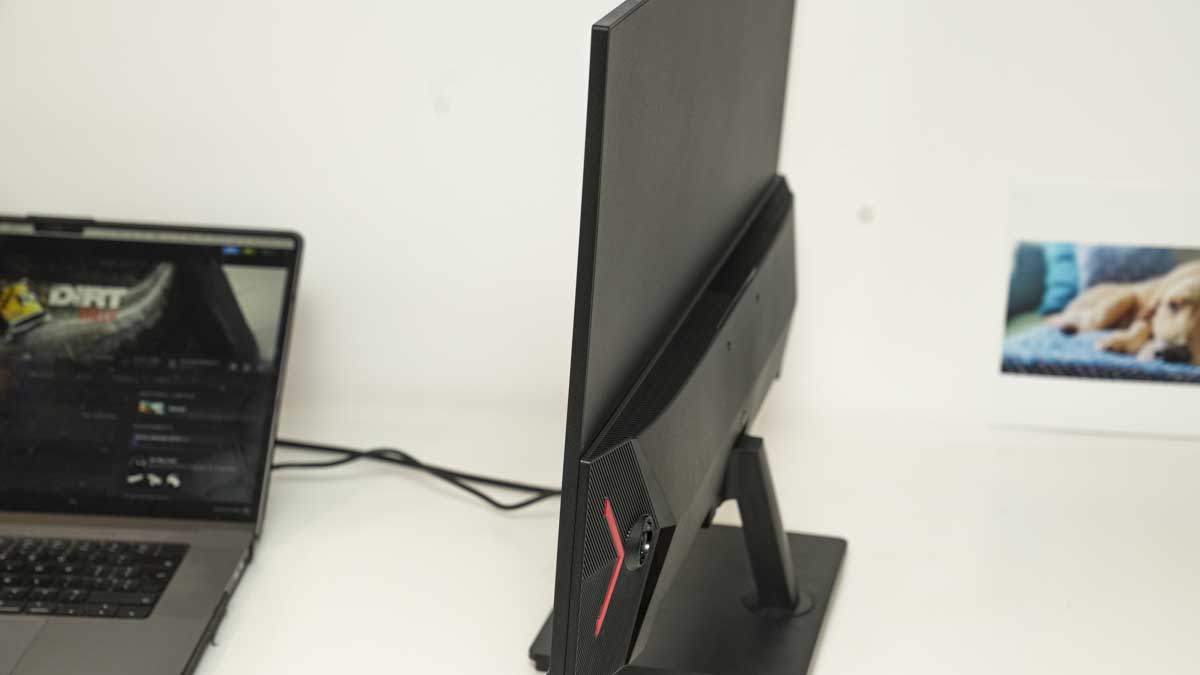
- Performance: 3.5 / 5
Arzopa M1RC: Final verdict
The Arzopa M1RC offers a decent combination of performance and value, especially for gamers on a budget. Its 180Hz refresh rate proves ideal for anyone looking for a well priced monitor for gaming with the sharp 2K QHD resolution helping to enhance gaming environments. The slim bezel design is well worth a mention and not just for the asthetics as it will ensure minimal break between screens in multi-monitor setups. While the monitor lacks some advanced features, like height adjustment or certified eye protection technology, it compensates with easy setup, a matte screen that minimizes reflections, and a versatile array of input options, including USB Type-C and DisplayPort.
However, for creative professionals where colour accuracy is essential, the Arzopa M1RC does fall short. Issues with colour uniformity, contrast, and overall colour accuracy make this monitor less suitable for image and video editing. For casual use, social media editing, and gaming, this monitor delivers exceptional performance at its price point.
The Arzopa M1RC is an excellent choice for gamers and content creators looking for a large, affordable, high-refresh-rate monitor, but it may not meet the needs of professionals requiring top-tier display quality.
Should you buy a Arzopa M1RC gaming monitor?
| Value | Good gaming performance on a budget | 4 / 5 |
| Design | Sleek and modern although minimal physical adjustment | 3.5 / 5 |
| Features | High refresh rate, decent resolution for the price | 4 / 5 |
| Performance | Fast for gaming, weak in colour accuracy | 3.5 / 5 |
| Overall | Great for gamers but lacks creative precision | 3.5 / 5 |
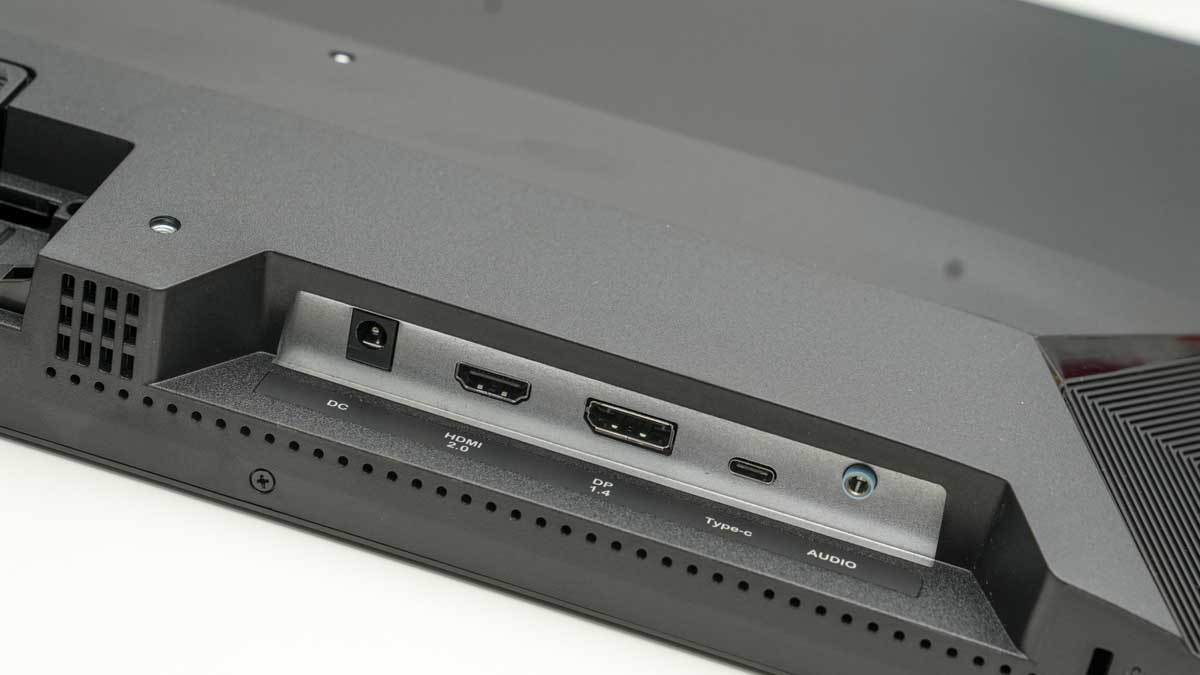
Buy it if...
You want a high refresh rate:
The 180Hz refresh rate is perfect for fast-paced gaming at an affordable price.
You need a budget 2K monitor:
It's one of the more affordable 2K monitors on the market, making it a good deal for those upgrading from 1080p.
Don't buy it if...
You require high colour accuracy:
If your work relies on precise colour reproduction, the M1RC's limitations in Adobe RGB and P3 coverage could be a dealbreaker.
You want built-in speakers:
This monitor lacks integrated speakers, which may be inconvenient for users seeking an all-in-one solution for multimedia.
We tested out the best monitors for graphic design - and these are our expert recommendations
